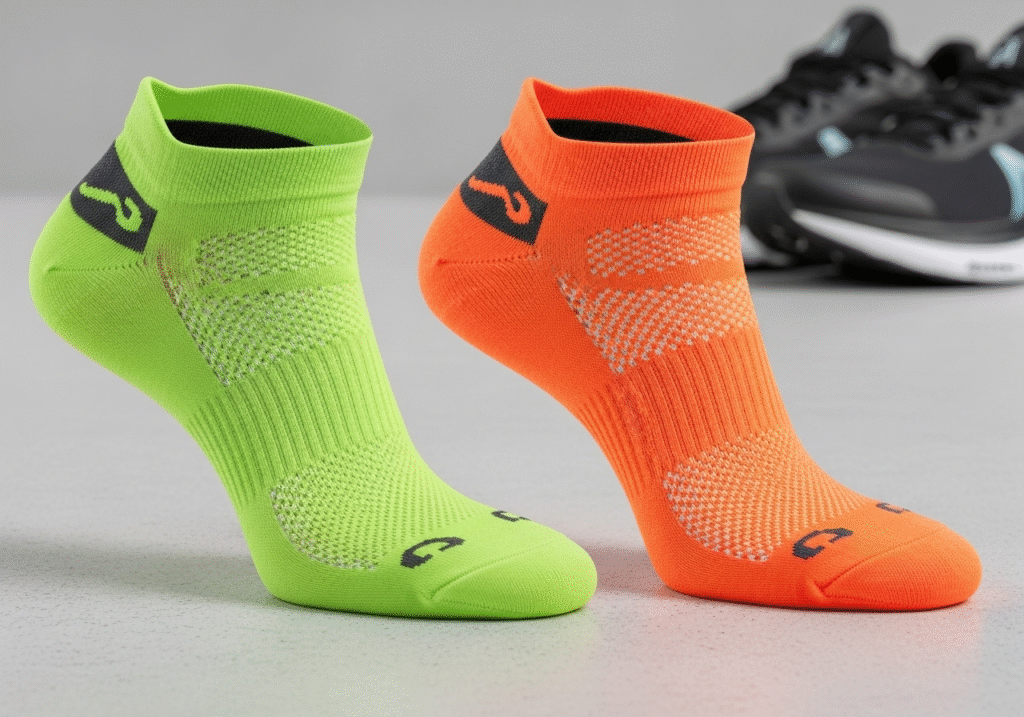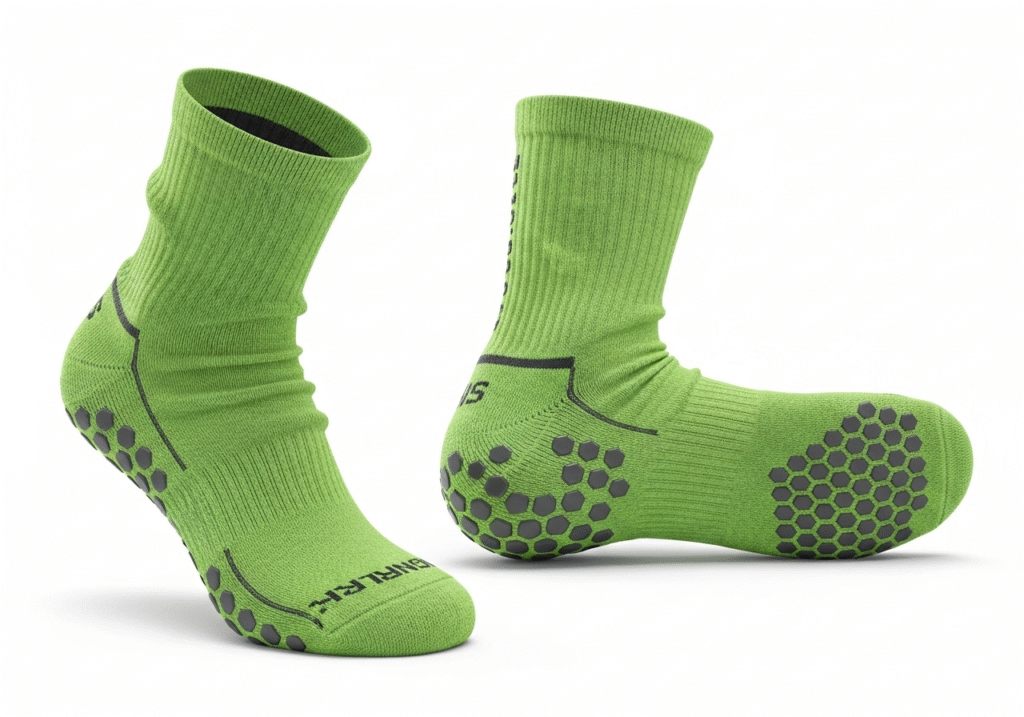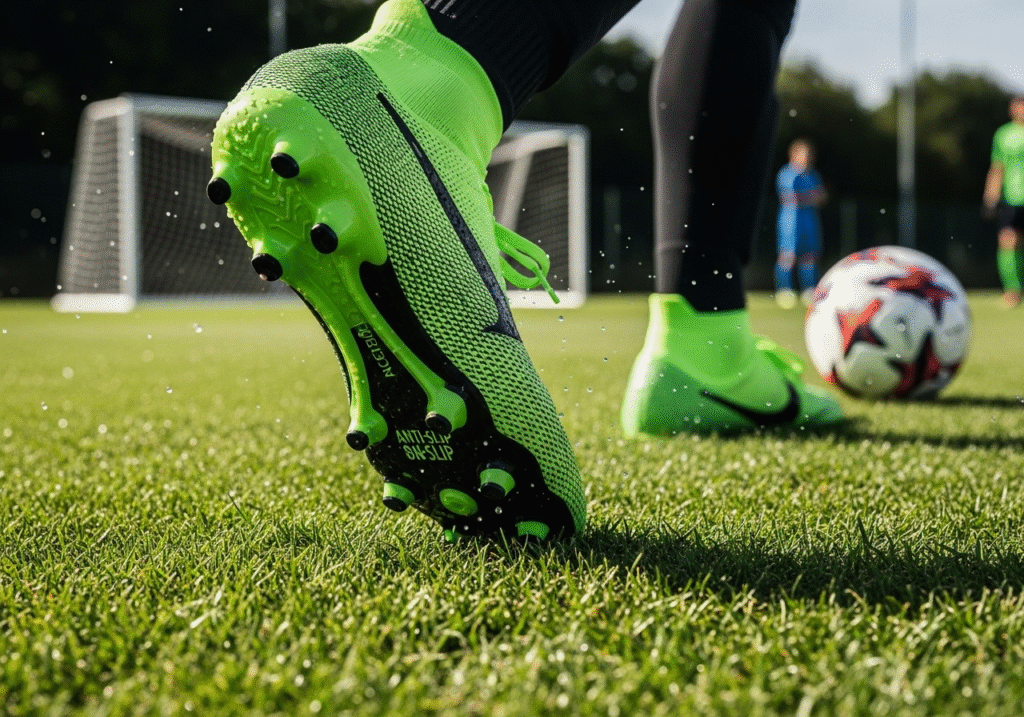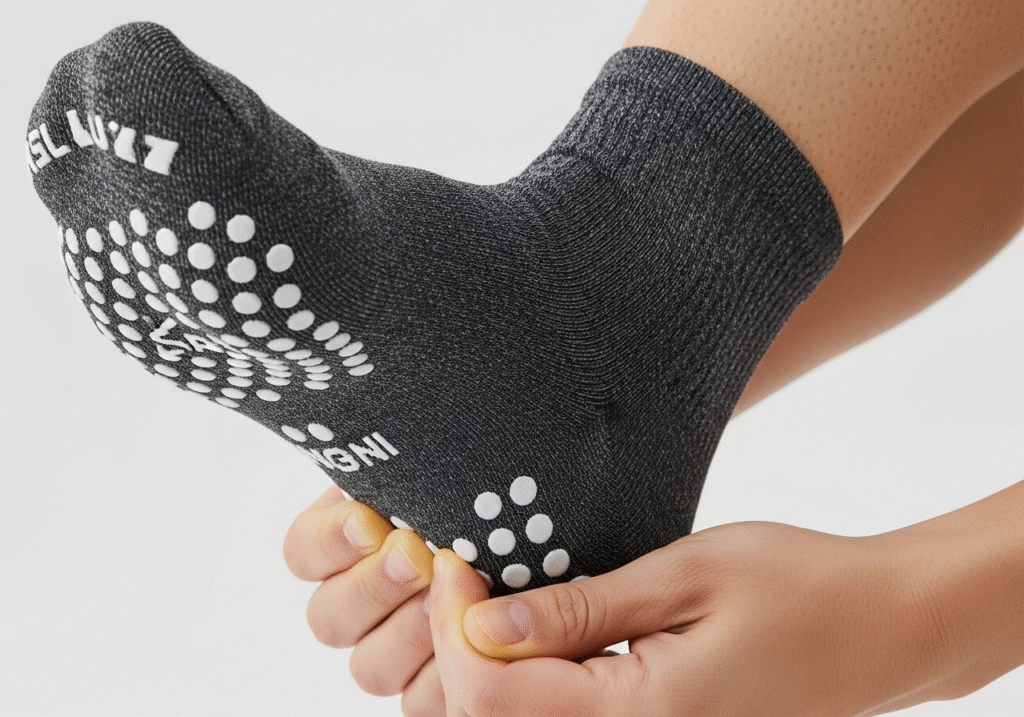That familiar burn of a blister forming mid-run can ruin your performance. Your foot sliding inside your shoe wastes energy and focus. The right performance grip sock locks your foot in place.
To choose the right grip socks for running, focus on thin, moisture-wicking fabric with a snug fit and subtle grip patterns on the sole that lock your foot inside the shoe, preventing blisters.

I remember working with a small athletic brand that wanted to solve the blister problem for marathon runners. We tested dozens of yarn combinations and grip patterns. We discovered it wasn't about big, bulky grips like you see on yoga socks. It was about creating a secure, unified system between the foot, the sock, and the shoe. The final product changed how their sponsored athletes thought about socks forever.
Is it better to wear thick or thin socks when running?
Choosing the wrong sock thickness can leave your feet sweaty and cramped. Or, if they're too loose, you end up with painful blisters from all the friction inside your shoe.
Thin socks are almost always better for running. They provide superior breathability, a more precise shoe fit, and better moisture management, which are all key to preventing blisters and discomfort.

In my years manufacturing socks for all kinds of athletes, the debate between thick and thin comes up constantly. For running, the choice is clearer than you might think. Your running shoe already has all the cushioning it needs built into the midsole. Adding a thick sock often just makes the shoe too tight, cutting off circulation and trapping heat.
A thin sock, however, excels in three key areas:
- Breathability: Thinner materials allow heat and moisture to escape, keeping your feet cooler and drier. This is the number one defense against blisters, which thrive in damp environments.
- Fit: A thin sock doesn't alter the engineered fit of your running shoe. It allows your foot to sit properly inside the shoe as the designers intended, giving you better stability.
- Feel: You get a better connection to the ground and a better feel for how your foot is moving inside the shoe.
The only real exception is for running in extreme cold, where a thicker merino wool sock is needed for insulation.
| Sock Thickness | Best For | Key Benefit | Potential Downside |
|---|---|---|---|
| Thin | Most running, hot weather, racing | Breathability, Fit | Less cushioning |
| Thick | Extreme cold, runners wanting max cushion | Cushioning, Warmth | Traps heat, bulky fit |
Are grip socks good for running?
You see grip socks for yoga and Pilates and think they're only for studio floors. It seems counterintuitive to wear them inside an already tight-fitting running shoe.
Yes, specialized grip socks are excellent for running. They use subtle grips to prevent your foot from sliding inside the sock and the sock from sliding against the shoe's insole.

This is a common point of confusion. You are not meant to wear a thick, plush yoga sock with huge silicone dots for a 10k run. Running grip socks are a specific category of performance apparel. They are designed to solve the problem of "in-shoe slippage."
Even in a perfectly tied shoe, your foot moves. With every step, your sock slides against your skin and against the shoe's insole. These tiny micro-movements create friction, which causes hot spots and blisters. They also waste energy.
Performance grip socks tackle this head-on. Their design is different:
- Subtle Grip Pattern: The grips are smaller, thinner, and more widely distributed. They are designed to create friction without creating uncomfortable bumps you can feel.
- Targeted Placement: The grips are placed in key zones like the heel and the ball of the foot, where the most pressure and movement occur.
- Compression Fit: The sock itself is built on an athletic, compressive chassis that hugs your foot snugly, ensuring there's no loose fabric to bunch up.
It creates a locked-in system: your foot is gripped by the sock, and the sock is gripped by the shoe.
Do grip socks actually make a difference?
The running market is full of expensive gear that promises to make you faster. It is easy to be skeptical and wonder if performance grip socks are just another costly gimmick.
Yes, they make a huge difference in performance and comfort. By eliminating in-shoe slippage, they directly prevent blisters, improve stability for quicker movements, and enhance power transfer from your foot to the ground.

The difference is tangible. Any runner who has suffered from blisters knows that friction1 is the enemy. Grip socks are the most direct solution to that problem. Here's a breakdown of the benefits I've seen confirmed by athletes I work with.
- Blister Prevention2: This is the most immediate and noticeable benefit. By stopping the micro-movements of the sock against your skin, you eliminate the friction that causes blisters. It's that simple.
- Improved Stability and Power3: When your foot is locked in place, you feel more stable, especially during quick turns, downhill running, or on uneven trails. You waste less energy trying to stabilize your foot inside the shoe. This means more of your power goes directly into pushing off the ground.
- Enhanced Comfort and Confidence: Knowing that your feet are secure allows you to run with more confidence. You're not mentally bracing for that hot spot to appear or worrying about your foot sliding forward on a descent. This mental freedom can be just as valuable as the physical benefits.
| Feature | Normal Running Sock | Performance Grip Sock |
|---|---|---|
| Foot aSlip | High risk of slippage | Minimal to no slippage |
| Blisters | Common problem due to friction | Drastically reduced risk |
| Power | Energy lost to stabilizing | More efficient power transfer |
| Confidence | Lower on uneven terrain | Higher stability and confidence |
How to correctly wear grip socks?
You just bought a pair of high-tech grip socks. If you just pull them on like any old sock, you could end up with wrinkles and a poor fit, completely negating their benefits.
To wear grip socks correctly, ensure your foot is dry, pull the sock on smoothly without any bunches, and make sure the heel pocket is perfectly aligned with your own heel.

Getting the most out of a performance grip sock4 is all about the fit. A perfect fit5 allows the technology to do its job. It's a simple process, but every step is important.
- Start with the Right Size: This is the most important step. Don't guess. Look at the manufacturer's size chart. A sock that's too big will wrinkle and slide. A sock that's too small will be uncomfortable and won't position the grips correctly.
- Pull On, Don't Bunch: Gather the sock down to the heel. Put your toes in and pull the sock up over your foot and ankle smoothly. Run your hands over it to make sure there are no wrinkles or bunched-up areas, especially under the arch and around the toes.
- Seat the Heel: The heel pocket of the sock should sit perfectly on your heel. If it's pulled up too high onto your Achilles tendon, the fit is wrong. This alignment ensures the grips are in the right place.
- Lace Up Securely: Once your socks and shoes are on, lace them up snugly. This presses the sock's outer grips against the shoe's insole, completing the "lockdown" effect.
Proper wear ensures you get all the benefits you paid for.
Conclusion
Choosing the right running sock with grip technology isn't a luxury; it's a strategic upgrade for any serious runner looking to eliminate blisters, improve stability, and maximize their performance.
Related:
-
Learn about the impact of friction on running performance and effective strategies to minimize it. ↩
-
Explore effective strategies to prevent blisters and enhance your running experience. ↩
-
Learn how stability can boost your running efficiency and overall performance. ↩
-
Discover how performance grip socks can enhance your athletic performance and provide better stability. ↩
-
Learn tips and tricks to ensure your grip socks fit perfectly for optimal performance. ↩
